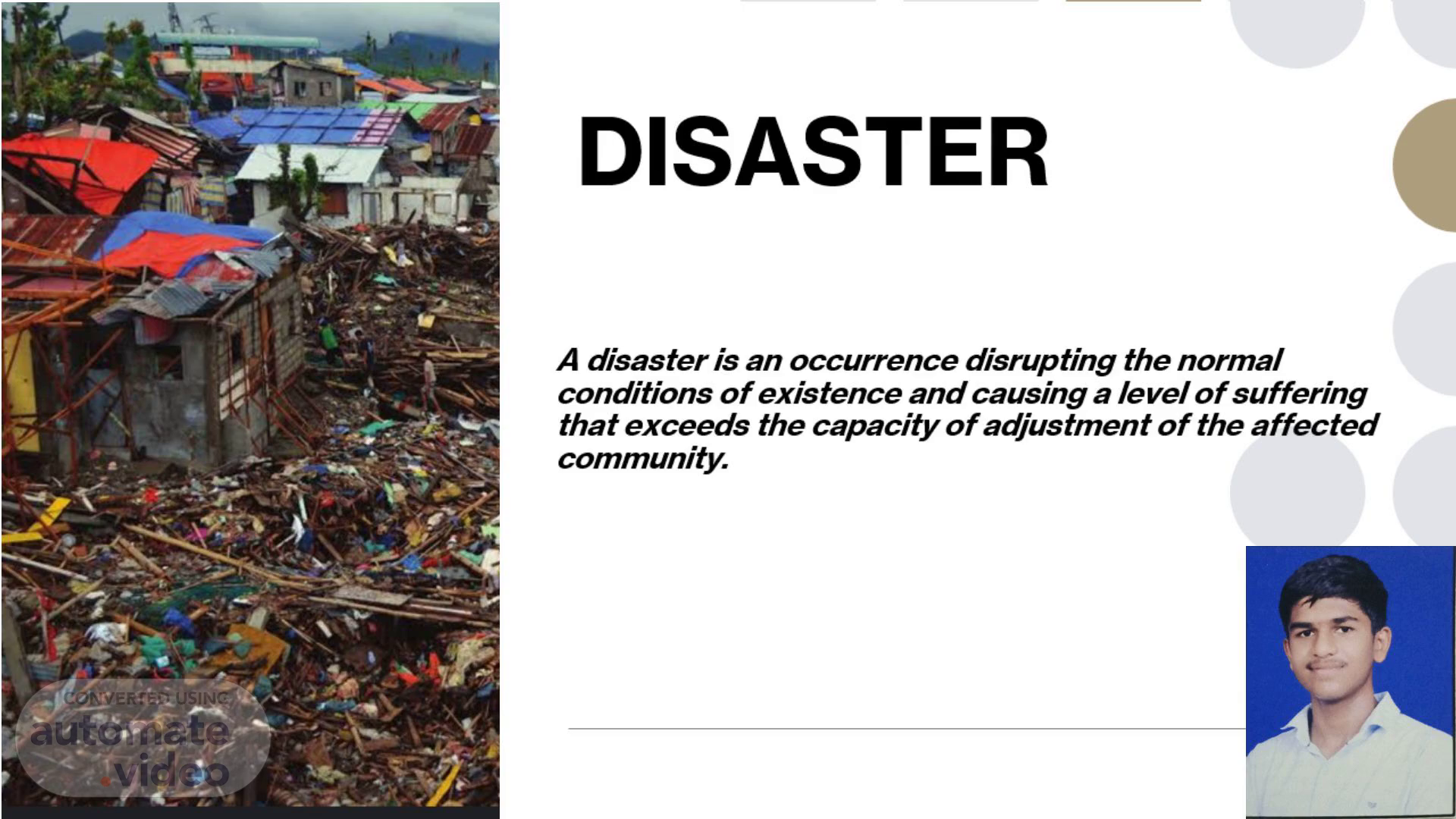Scene 1 (0s)
DISASTER. A disaster is an occurrence disrupting the normal conditions of existence and causing a level of suffering that exceeds the capacity of adjustment of the affected community..
Scene 2 (12s)
EXAMPLE OF DISASTERS. Earthquakes, tsunamis, floods, landslides, hurricanes, wildfires, droughts, and volcanic eruptions are some examples of natural disasters. Such disasters cause massive loss of life, property, and many other miseries..
Scene 3 (26s)
TYPES OF DISASTERS. Types of disasters usually fall into two broad categories: natural and man-made. Natural disasters are generally associated with weather and geological events, including extremes of temperature, floods, hurricanes, earthquakes, tsunamis, volcanic eruptions, landslides, and drought..
Scene 4 (43s)
CAUSES OF DISASTER. It is the combination of the hazard along with exposure of a vulnerable society that results in a disaster. Natural disasters can be aggravated by inadequate building norms, marginalization of people, inequities, overexploitation of resources, extreme urban sprawl and climate change..
Scene 5 (59s)
SOCIAL IMPACTS OF DISASTERS. Increased mental health issues, alcohol misuse, domestic violence, chronic disease and short-term unemployment have resulted from extreme weather events such as bushfires, severe storms, cyclones, floods and earthquakes..
Scene 6 (1m 14s)
DISASTER MANAGEMENT. Disaster management is how we deal with the human, material, economic or environmental impacts of said disaster, it is the process of how we “prepare for, respond to and learn from the effects of major failures”. Though often caused by nature, disasters can have human origins..
Scene 7 (1m 31s)
EFFECTS OF DISASTER. In a disaster, you face the danger of death or physical injury. You may also lose your home, possessions, and community. Such stressors place you at risk for emotional and physical health problems..
Scene 8 (1m 46s)
DISASTER AFFECT ENVIRONMENT. Wildlife can be killed by the force of the disaster or impacted indirectly through changes in habitat and food availability. Endangered species are especially vulnerable when habitat is destroyed. Water quality is impacted when sewage treatment facilities flood or debris enters reservoirs and waterways..
Scene 9 (2m 2s)
SOLUTION OF DISASTER. Awareness, education, preparedness, and prediction and warning systems can reduce the disruptive impacts of a natural disaster on communities. Mitigation measures such as adoption of zoning, land-use practices, and building codes are needed, however, to prevent or reduce actual damage from hazards..
Scene 10 (2m 20s)
CONCLUSION OF DISASTERS. This is a plan that outlines what hazards your business is at risk of facing, what you can do to avoid or manage them and how to get your business back up and running should a disaster strike. The conclusion of your disaster management plan reiterates the salient points and provides actionable takeaways..
